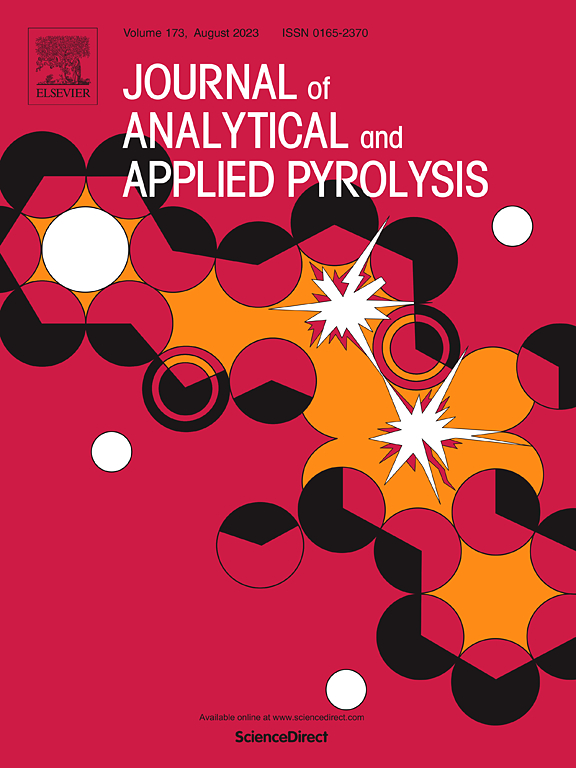Laboratory-scale simulation study of pyrolysis process in a fixed-bed gasifier for municipal solid waste pellets: Effects of temperature distribution and residence time
IF 5.8
2区 化学
Q1 CHEMISTRY, ANALYTICAL
引用次数: 0
Abstract
In this study, stepwise heating pyrolysis was designed to simulate the pyrolysis process of municipal solid waste (MSW) pellet in an updraft fixed bed gasifier at a laboratory scale. Differences in pyrolysis product between fixed bed stepwise heating pyrolysis (FBS, ranging from 300 °C to 800 °C) and continuous heating pyrolysis (FBC, maintained at 800 °C) were revealed. The impact of residence time at various temperature ranges on MSW pyrolysis was also investigated. Results indicated that compared to FBC, the gas yield of FBS decreased by 30.74 %, while its liquid yield increased by 11.96 %. It was primarily due to the lower heating rate reduced the secondary conversion of aliphatic hydrocarbons, oxygenated compounds, and monoaromatic hydrocarbons (MAHs) within liquid products. In addition, the composition of MSW pyrolysis products was changed by adjusting the residence time. Maintaining a uniform residence time of 5 min for MSW pellets at each temperature was considered optimal for gas yield, which was mainly attributed to the enhanced cracking of long-chain aliphatic and polycondensation of MAHs and polycyclic aromatic hydrocarbons (PAHs). Besides, the volatiles (C- and O-containing compounds) of the char were almost completely released. The underlying influence mechanism of residence time on the pyrolysis behavior of MSW was also proposed, which could provide insights for the implementation of MSW gasification.
城市固体废物颗粒在固定床气化炉中热解过程的实验室规模模拟研究:温度分布和停留时间的影响
本研究设计了分步加热热解,在实验室规模上模拟了城市固体废物(MSW)颗粒在上升气流固定床气化炉中的热解过程。结果表明,固定床分步加热热解(FBS,温度范围为 300 ℃ 至 800 ℃)和连续加热热解(FBC,温度保持在 800 ℃)的热解产物存在差异。此外,还研究了在不同温度范围内的停留时间对城市固体废物热解的影响。结果表明,与 FBC 相比,FBS 的气体产量减少了 30.74%,而液体产量增加了 11.96%。这主要是由于较低的加热速率减少了液体产品中脂肪族碳氢化合物、含氧化合物和单芳烃(MAHs)的二次转化。此外,还通过调整停留时间来改变城市固体废物热解产物的成分。在每个温度下,保持 MSW 粒子 5 分钟的均匀停留时间被认为是气体产量的最佳值,这主要归功于长链脂肪族的裂解以及 MAHs 和多环芳烃 (PAHs) 的缩聚作用的增强。此外,炭的挥发物(含 C 和 O 的化合物)几乎完全释放。研究还提出了停留时间对城市固体废物热解行为的潜在影响机理,为城市固体废物气化的实施提供了启示。
本文章由计算机程序翻译,如有差异,请以英文原文为准。
求助全文
约1分钟内获得全文
求助全文
来源期刊
CiteScore
9.10
自引率
11.70%
发文量
340
审稿时长
44 days
期刊介绍:
The Journal of Analytical and Applied Pyrolysis (JAAP) is devoted to the publication of papers dealing with innovative applications of pyrolysis processes, the characterization of products related to pyrolysis reactions, and investigations of reaction mechanism. To be considered by JAAP, a manuscript should present significant progress in these topics. The novelty must be satisfactorily argued in the cover letter. A manuscript with a cover letter to the editor not addressing the novelty is likely to be rejected without review.

 求助内容:
求助内容: 应助结果提醒方式:
应助结果提醒方式:


